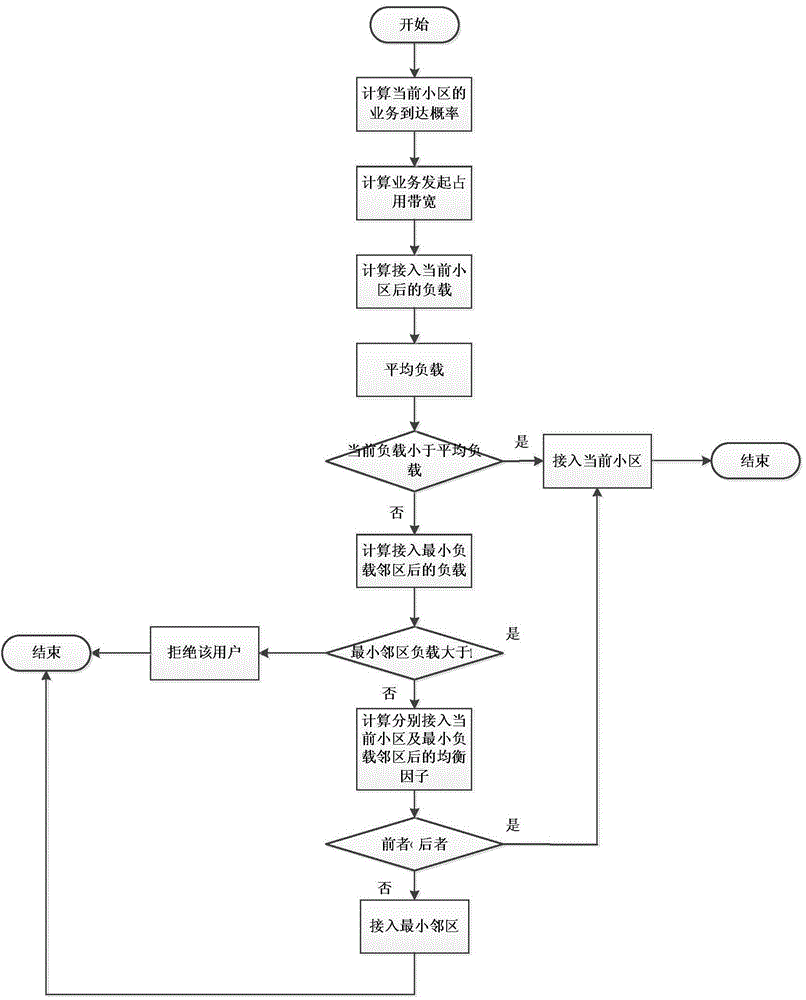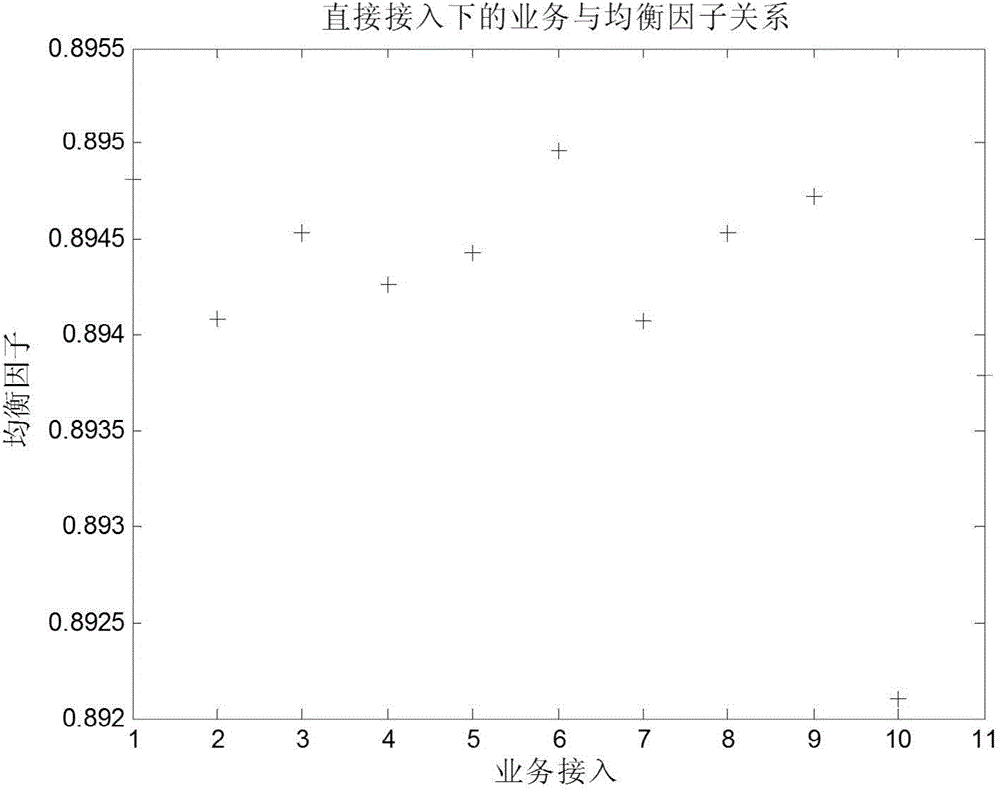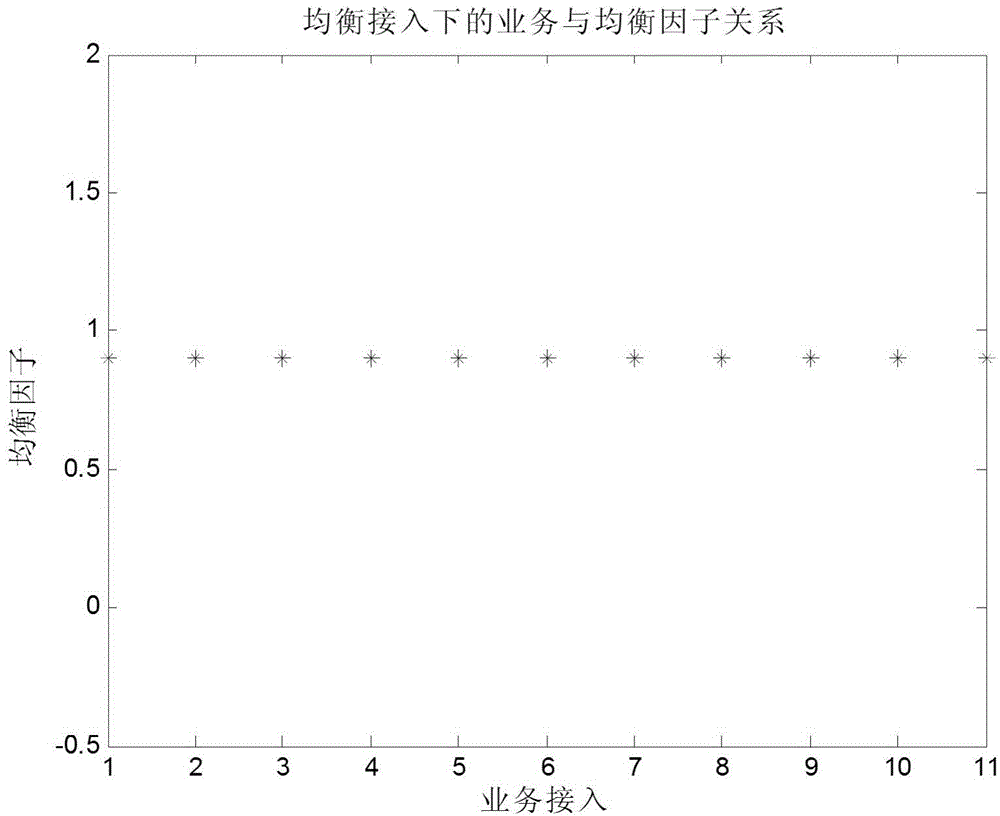LTE load balancing method based on admission control
A load balancing and admission control technology, applied in the field of LTE communication network, can solve problems such as unbalanced service request volume, and achieve the effect of avoiding low utilization rate, high throughput, and improving customer perception.
- Summary
- Abstract
- Description
- Claims
- Application Information
AI Technical Summary
Problems solved by technology
Method used
Image
Examples
Embodiment
[0037] The LTE cell load balancing method based on admission control described in this example includes steps such as calculating cell load, service measurement, resource accounting, and admission control.
[0038] Step 1: Calculate cell load:
[0039] Step 1-1: Set each cell c and its transmit power P c , neighboring cell x and its transmit power P x , user u i Path loss to cell x Thermal noise N t , Calculate each user u in the cell ci The signal-to-noise ratio of: in, for user u i Path loss to cell c;
[0040] Step 1-2: Set user u i Number of occupied physical resource blocks Application rate Occupied bandwidth BW of each physical resource block, calculate user u i Physical Resource Block Capability R u i = V u i NPRB u i ...
PUM
 Login to View More
Login to View More Abstract
Description
Claims
Application Information
 Login to View More
Login to View More - R&D
- Intellectual Property
- Life Sciences
- Materials
- Tech Scout
- Unparalleled Data Quality
- Higher Quality Content
- 60% Fewer Hallucinations
Browse by: Latest US Patents, China's latest patents, Technical Efficacy Thesaurus, Application Domain, Technology Topic, Popular Technical Reports.
© 2025 PatSnap. All rights reserved.Legal|Privacy policy|Modern Slavery Act Transparency Statement|Sitemap|About US| Contact US: help@patsnap.com



